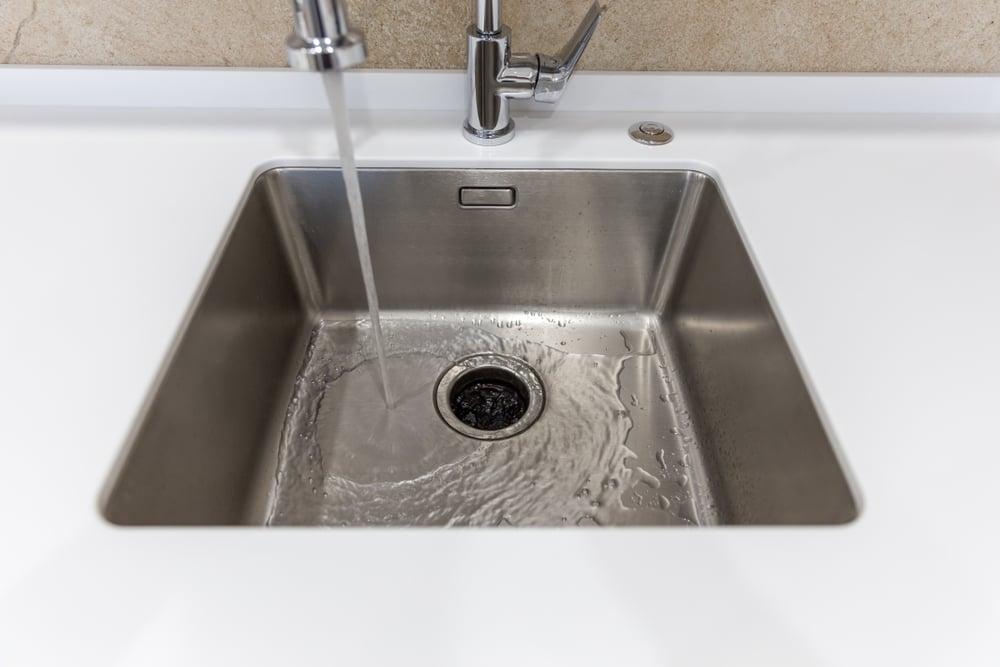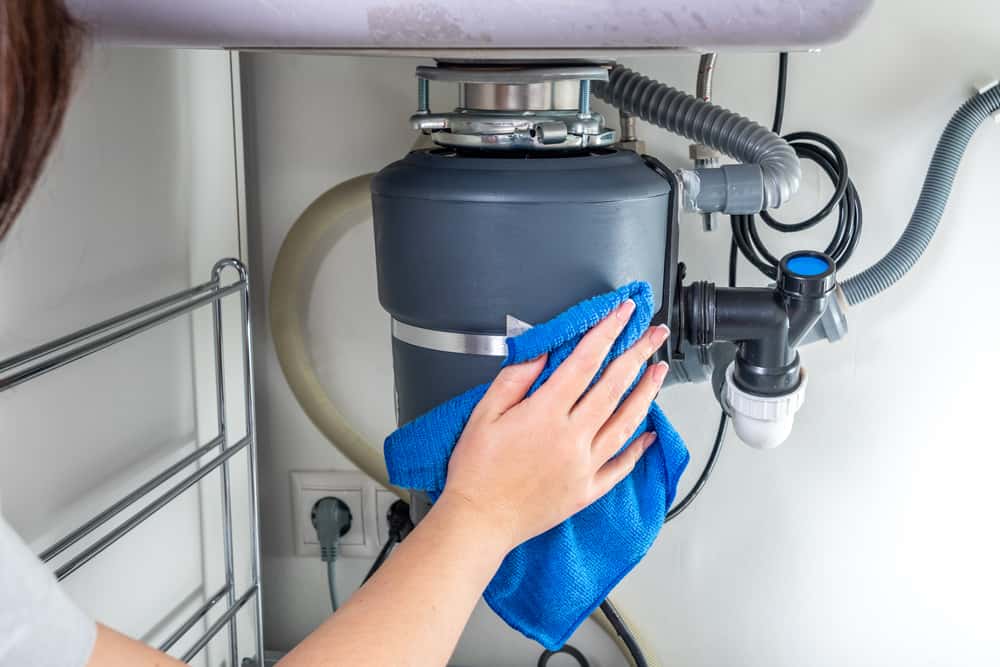Easy-to-Follow Instructions for Repairing a Leaky Waste Disposal
Easy-to-Follow Instructions for Repairing a Leaky Waste Disposal
Blog Article
Almost everyone maintains their own unique beliefs about How to fix a pretty consistent leak from my garbage disposal.

Waste disposal unit are important kitchen devices that assist in dealing with food waste successfully. Nevertheless, a leaking waste disposal unit can be an aggravating and messy trouble to handle. The good news is, numerous leakages can be taken care of quickly with a couple of straightforward actions. In this short article, we will talk about exactly how to take care of a leaking garbage disposal efficiently.
Introduction
Waste disposal unit are mounted under kitchen area sinks and are created to shred food waste into smaller sized items, permitting it to go through the plumbing system conveniently. While these gadgets are typically reputable, leaks can take place in time as a result of deterioration, loose connections, or damage to the device.
Typical Causes of Leakages in Garbage Disposals
Worn Seals and Gaskets
Seals and gaskets play a critical role in stopping water from leaking out of the garbage disposal. With time, these components can degrade, leading to leaks around the disposal system.
Loose Links
The links between the garbage disposal and the plumbing system can become loose in time, causing water to leakage out during procedure.
Fractures or Openings in the Disposal System
Physical damages to the garbage disposal, such as cracks or openings in the housing, can additionally lead to leakages.
Identifying the Resource of the Leakage
Before trying to fix a dripping waste disposal unit, it is necessary to identify the source of the leakage. This can generally be done with aesthetic inspection or by carrying out basic examinations.
Visual Evaluation
Evaluate the garbage disposal device thoroughly for any kind of signs of water leak. Pay attention to areas around seals, gaskets, and connection factors.
Testing for Leakages
One way to check for leakages is by running water with the disposal device and checking for any type of visible indications of leakage.
Devices and Materials Needed for Dealing With a Leaking Waste Disposal Unit
Prior to starting the repair work procedure, gather the required devices and products, consisting of a screwdriver, flexible wrench, plumbing professional's putty, replacement seals or gaskets, and epoxy or patching material for repairing fractures or openings.
Step-by-Step Guide to Dealing With a Dripping Waste Disposal Unit
Switch off the Power
Prior to trying any type of repair services, make sure that the power to the garbage disposal unit is turned off to stop the threat of electrical shock.
Locate the Leak
Recognize the precise location of the leak and identify the reason.
Tighten Links
Use a wrench to tighten up any type of loose links between the disposal device and the plumbing system.
Replace Seals or Gaskets
If the leakage is due to worn seals or gaskets, get rid of the old components and replace them with brand-new ones.
Patching Splits or Holes
For cracks or holes in the disposal unit, usage epoxy or a suitable patching material to secure the broken area.
Testing the Garbage Disposal After Repair Work
When the repair service is complete, examine the garbage disposal by running water via it to guarantee that the leakage has been resolved.
Preventive Maintenance Tips to Stay Clear Of Future Leakages
To stop future leakages, it is important to perform regular maintenance on your garbage disposal. This consists of keeping it clean, staying clear of placing non-food items or tough objects down the disposal, and periodically looking for leakages or other concerns.
Final thought
In conclusion, fixing a leaking waste disposal unit is a reasonably simple process that can be completed with basic devices and products. By complying with the steps outlined in this post and practicing preventive maintenance, you can maintain your waste disposal unit in good working condition and avoid pricey repair work in the future.
What to Do About a Leaking Garbage Disposal
A leaking garbage disposal often goes unnoticed until you confront a sopping cabinet, a foul-smelling puddle, or an audible drip-drip-drip from the unit. The fix can be frustrating, too, because the leak can stem from a number of components in the system. Fortunately, with a little sleuthing, you can zero in on the leak and—depending on the exact location—stop the icky oozing and repair the component that caused it. Worst case scenario, if it turns out that the garbage disposal must be replaced, installing a new one is a reasonable do-it-yourself task for those with basic plumbing skills. Read on to keep the cash you’d otherwise hand over to a pro.
Prepare to find the leak
Prior to testing the garbage disposal for leaks, unplug it at the wall outlet and turn off the power from the breaker box to prevent electrical shock. Then insert a watertight sink stopper into your sink drain and wipe the unit dry with a clean cloth. In any handy container, mix a few drops of food coloring into a few cups of water, and pour the dyed water onto the sink stopper to help you locate the leak.
Investigate the source
the top, where the disposal meets the sink drain the side, where the dishwasher hose or main drain pipe connects to the disposal or the bottom of the unit Inspect each of these locations while gliding a light-colored rag over the unit; the dyed water will readily show on the rag and reveal the location of the leak. If a leak isn’t immediately apparent, remove the sink stopper and pour a few more cups of dyed water down the sink drain, then check for leaks again. Leaks near the top of the unit are more likely to show themselves while the sink is plugged, while side and bottom leaks are more noticeable while the sink is unplugged.
The metal sink flange that sits directly inside the sink drain is typically sealed around the top with plumber’s putty (a clay-like sealant) and then secured from under the sink with bolts. If the plumber’s putty deteriorates, or the bolts loosen, the flange can no longer form a watertight seal between the sink drain and the disposal—which could cause a leak at the top of the unit.
To reseal the leaky flange, you must first detach the garbage disposal. Start by loosening the screws securing the main drain pipe to the disposal, then loosen the screws in the metal clamp securing the dishwasher hose to the disposal and detach the drain pipe and dishwasher hose from the disposal. Loosen the screws in the mounting ring that connects the disposal to the metal mounting assembly beneath the sink, then pull down the disposal and carefully set it on a clean, dry surface. Loosen the bolts in the mounting assembly with a wrench, then pull down the mounting assembly and set it near the disposal.

As a keen person who reads on The Handy Guide To Fixing Your Garbage Disposal Leaking, I imagined sharing that segment was important. For those who appreciated our blog entry if you please be sure to pass it around. I treasure reading our article about Garbage Disposal Leaking From Bottom.
Request A Quote Report this page